The Minoan civilization, born in the depths of antiquity, captivates archaeologists and historians alike with its enigmatic rise and fall. This ancient civilization, nestled on the island of Crete during the Bronze Age, flourished and showcased remarkable advancements in architecture, art, and seafaring. Yet, its prosperous journey was abruptly halted, leaving behind a mystery that continues to baffle scholars to this day. Join us on a captivating journey as we delve into the intricate tapestry of the Minoan civilization, exploring its defining characteristics, cultural exchange, religious practices, and ultimately, the circumstances that led to its demise.
Contents
- The Rise of the Minoan Civilization
- Key Characteristics of Minoan Civilization
- Trade and Cultural Exchange
- Minoan Religion and Rituals
- The Mysterious Decline of the Minoan Civilization
- Unraveling the Enigma
- Conclusion
-
Frequently Asked Questions
- 1. How did the Minoan civilization acquire its wealth?
- 2. What were the key architectural features of Minoan palaces?
- 3. Were the Minoans influenced by other civilizations?
- 4. What was the significance of bull worship in Minoan religion?
- 5. Did the Minoans have religious sites other than palaces?
- 6. What led to the decline of the Minoan civilization?
- 7. What are some theories surrounding the collapse of the Minoan civilization?
- 8. How has archaeology contributed to our understanding of the Minoan civilization?
- 9. What impact did the Minoan civilization have on later civilizations?
- 10. Why is the story of the Minoan civilization considered an enigma?
- References
-
Frequently Asked Questions
- 1. What is the significance of the Minoan Civilization?
- 2. How did the Minoans achieve their advanced architecture and engineering?
- 3. What role did art and pottery play in Minoan civilization?
- 4. How did the Minoans dominate maritime trade in the region?
- 5. How did the Minoans interact with Egypt and Mesopotamia?
- 6. What was the significance of bull worship in Minoan religion?
- 7. What were the sacred caves and mountaintop sanctuaries used for?
- 8. What led to the decline of the Minoan Civilization?
- 9. What are some theories and controversies surrounding the decline of the Minoan Civilization?
- 10. What recent archaeological discoveries have shed light on the Minoan Civilization?
- References
- Read More
The Rise of the Minoan Civilization
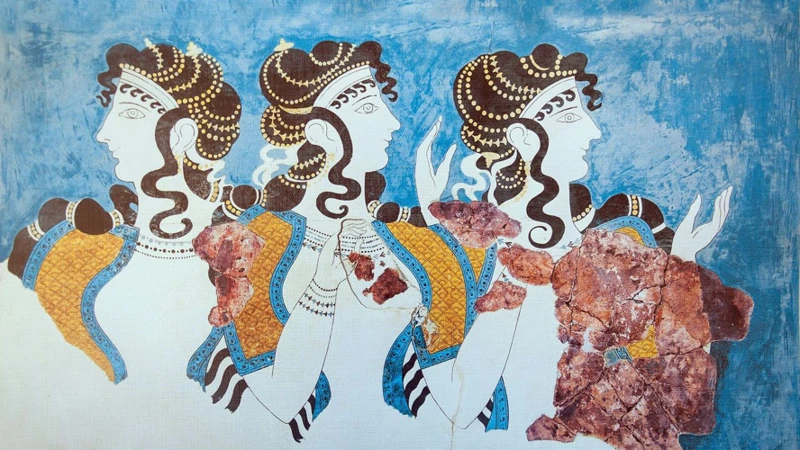
The Minoan civilization emerged on the island of Crete during the Bronze Age, representing a significant advancement in human development. The exact origins of the Minoans remain a subject of debate among scholars, with theories ranging from indigenous Cretan development to influences from neighboring civilizations. Nevertheless, the Minoans rapidly gained prominence as skilled seafarers and traders, establishing extensive networks that connected them to distant lands. Through their maritime exploits, they acquired valuable resources such as timber, metals, and exotic goods, which fueled their economic growth and allowed for the development of a sophisticated society. The rise of the Minoan civilization was also characterized by advancements in architecture and engineering, as seen in the construction of magnificent palaces like Knossos, Phaistos, and Malia. These grand structures showcased the Minoans’ innovative building techniques, featuring multi-storied complexes, intricate frescoes, and advanced plumbing systems. The Minoans’ artistic prowess extended to their pottery, which was adorned with vibrant colors and intricate designs, depicting scenes of everyday life, religious rituals, and mythological narratives. With a culture that thrived on creativity and exploration, the Minoan civilization grew to become a dominant force in the Aegean region, establishing their presence and influence in the wider Mediterranean world.
Key Characteristics of Minoan Civilization
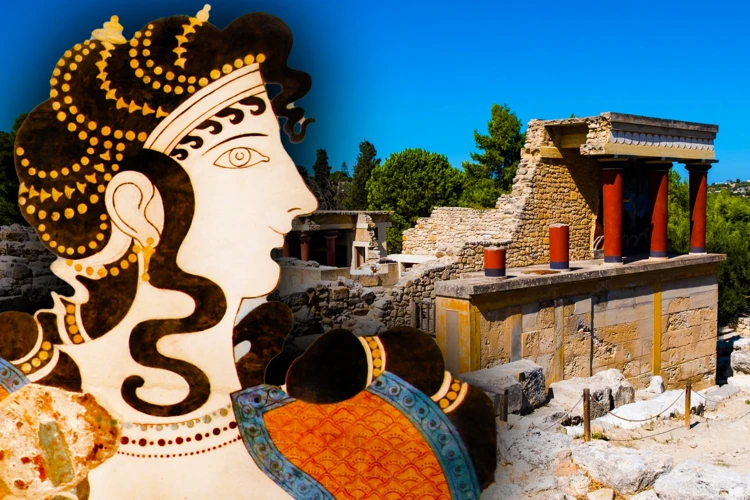
The Minoan civilization encompassed several key characteristics that distinguished it from contemporary societies. One remarkable aspect was their advanced architecture and engineering prowess, as demonstrated by the construction of grand palaces, intricate drainage systems, and multi-storied buildings like the Palace of Knossos. These architectural marvels showcased the Minoans’ ingenuity and technical expertise. Another defining characteristic was their exquisite art and pottery, characterized by vibrant colors, intricate designs, and depictions of various aspects of Minoan life and mythology, offering insights into their culture and beliefs. The Minoans’ maritime supremacy played a crucial role in their rise, with their mastery of seafaring and extensive trade networks allowing them to connect with distant civilizations and accumulate wealth. These defining characteristics combined to shape the Minoan civilization and foster a unique and prosperous society that left an indelible mark on history.
1. Advanced Architecture and Engineering
The Minoans showcased a mastery of advanced architecture and engineering, evident in the construction of their magnificent buildings and structures. The palaces of Knossos, Phaistos, and Malia stand as testaments to their ingenuity and architectural prowess. These grand palaces were multi-storied complexes with complex floor plans, labyrinthine corridors, and vast courtyards. They utilized architectural features such as columns, colonnades, and light wells to create a sense of grandeur and enhance the flow of air and light. The Minoans also employed advanced engineering techniques, including the use of ashlar masonry – finely cut and precisely fitting stone blocks – to construct their buildings. They developed systems for efficient water management and drainage, using terracotta pipes and channels to collect and redirect water. The result was a society that boasted not only aesthetically striking structures but also functional and practical innovations ahead of its time. These architectural achievements continue to captivate and inspire modern-day architects and historians, providing a glimpse into the sophistication and technical expertise of the Minoan civilization.
2. Intricate Art and Pottery
The Minoan civilization is renowned for its intricate art and pottery, which provide invaluable insights into their culture and way of life. Minoan artisans exhibited exceptional skill and attention to detail, creating masterpieces that still captivate the world today. One of the distinguishing features of Minoan art is its vibrant and lively nature, often depicting scenes of nature, everyday life, and religious ceremonies. The frescoes found in palaces and villas showcase a wide range of subjects, including graceful figures engaged in dance, sports, and ritualistic activities. One of the most iconic Minoan artworks is the famous Bull Leaping fresco, discovered at the palace in Knossos. This vividly colored painting captures the daring acrobatics performed during bull-leaping rituals, providing a glimpse into the Minoans’ fascinating religious practices. In addition to frescoes, Minoan pottery is equally remarkable. The Minoans employed different techniques, such as slip painting and relief decoration, to adorn their vessels. These intricately designed pottery pieces often featured motifs of animals, plants, and marine life, reflecting the close relationship the Minoans had with their surroundings. The Kamares ware, with its dark background and vibrant floral designs, is a testament to the Minoans’ exceptional craftsmanship. Minoan art and pottery not only served as decorative pieces but also carried symbolic and ritualistic meanings within their society. These artistic expressions encapsulate the beauty, creativity, and cultural richness of the Minoan civilization, leaving us in awe of their artistic achievements.
3. Maritime Supremacy
The Minoans’ maritime supremacy played a pivotal role in their rise as a dominant civilization. Positioned strategically in the heart of the Mediterranean Sea, the Minoans capitalized on their favorable geographic location to establish a vast trading network that stretched across the ancient world. Their mastery of seafaring enabled them to navigate the treacherous waters and connect with distant lands, including Egypt, Anatolia, Mesopotamia, and the Cycladic islands. Minoan ships, equipped with advanced sailing techniques and navigational tools, ferried goods such as olive oil, wine, pottery, precious metals, and textiles to foreign ports. In return, they acquired resources such as copper, tin, exotic woods, and luxury items like ivory and spices. This flourishing maritime trade not only enriched the Minoans economically but also fostered cultural exchange and diplomatic relations with neighboring civilizations. The Minoan fleet became a symbol of their power and prestige, showcasing their ability to dominate the seas and maintain a thriving network of trade routes. Their maritime supremacy allowed the Minoan civilization to flourish and reach its zenith, solidifying their status as an influential force in the ancient world.
Trade and Cultural Exchange
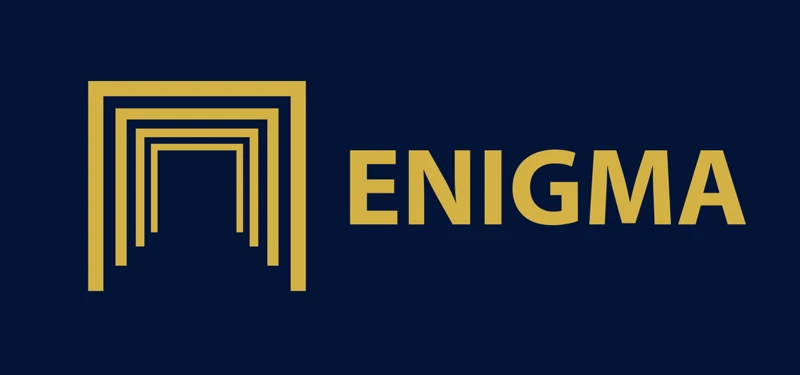
The Minoan civilization, with its strategic location in the eastern Mediterranean, became a hub of trade and cultural exchange during its golden age. The Minoans established extensive trade networks that stretched across the Aegean Sea and beyond, connecting them with civilizations such as Egypt, Mesopotamia, and the wider Mediterranean world. The island of Crete served as a gateway for the movement of goods, ideas, and people, enabling the Minoans to acquire luxurious commodities like precious metals, gemstones, ivory, and exotic fruits. This flourishing trade brought great wealth to the Minoans, fostering a cosmopolitan society that embraced influences from diverse cultures. Through this cultural exchange, the Minoans absorbed artistic motifs, architectural styles, and religious practices from their trading partners, enriching their own unique civilization. The impact of this cultural exchange can be seen in the vibrant frescoes and pottery designs that incorporated foreign motifs, as well as the adoption of Egyptian-like formalities in Minoan religious rituals. Such cross-cultural interactions not only bolstered the Minoan economy but also contributed to the overall development of their society, making them a prominent and influential player in the ancient world.
1. Minoan Trade Routes
The Minoan civilization was renowned for its extensive trade networks, which played a crucial role in their economic prosperity and cultural exchange. The Minoans navigated the Aegean Sea with their advanced seafaring skills, establishing trade routes that reached far and wide. One of the primary trade routes of the Minoan civilization was the Eastern Mediterranean route, connecting Crete to Egypt, Syria, and Anatolia. This route allowed the Minoans to acquire valuable commodities such as papyrus, precious metals, and exotic spices. Another important trade route was the Central Mediterranean route, which connected Crete to the Greek mainland and other islands in the region. Through this route, the Minoans traded olive oil, wine, pottery, and textiles. The Minoans also ventured westward, reaching as far as the Iberian Peninsula and possibly even farther. This Western Mediterranean route enabled them to access important resources such as tin, which was crucial for bronze production. The Minoans’ trade in luxury goods, such as exquisite jewelry, ornate furniture, and finely crafted pottery, not only enriched their own society but also influenced and inspired the cultures they interacted with. The trade routes of the Minoan civilization were instrumental in fostering cultural exchange, spreading ideas, and shaping the Bronze Age world.
2. Influence from Egypt and Mesopotamia
The Minoan civilization, situated at the crossroads of the Mediterranean, experienced significant influence from the powerful civilizations of Egypt and Mesopotamia. This interaction fostered a rich exchange of ideas, technologies, and cultural practices. The Minoans were particularly intrigued by the advanced techniques of Egyptian sculpture and art, which influenced their own artistic expression and craftsmanship. Elements such as the use of vibrant colors, stylized figures, and narrative scenes were infused into Minoan art, creating a unique blend of styles. Additionally, the Minoans adopted certain aspects of Egyptian religious beliefs and practices. This can be observed in the veneration of symbols such as the double axe, which bears resemblance to the Egyptian ankh, symbolizing life and fertility. The Minoans also embraced the concept of a mother goddess figure, similar to the Egyptian goddess Isis, representing femininity, nature, and abundance. Mesopotamian influence on the Minoans is evident in trade practices and the development of administrative systems. The Minoans adopted the Mesopotamian system of recording transactions using clay tablets and developed an intricate system of linear script, known as Linear A. This system was used for record-keeping, trade agreements, and other administrative purposes. The exchange of ideas and cultural practices between the Minoans, Egyptians, and Mesopotamians demonstrates the interconnectedness of ancient civilizations and the role of cultural diffusion in shaping the Minoan civilization’s unique identity.
Minoan Religion and Rituals
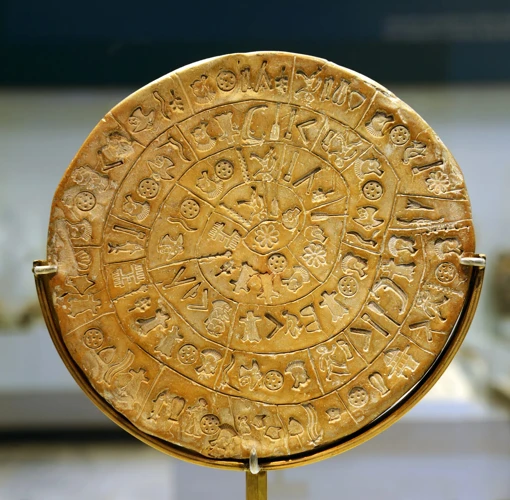
Minoan religion and rituals played a central role in the daily lives and cultural identity of the ancient civilization. One of the most significant aspects of their religious practices was the worship of the bull, symbolizing fertility, power, and renewal. Bull-leaping ceremonies, depicted in the famous frescoes of Knossos, showcased the Minoans’ daring athletic prowess and their deep connection with the divine. These rituals often took place in sacred spaces such as caves and mountaintop sanctuaries, which were believed to be portals to the spiritual realm. These natural sites held great significance, acting as conduits between the Minoans and their gods. The Minoan religion also incorporated the worship of mother goddesses, who represented the fertility of the earth and the nurturing aspects of femininity. These divinities were honored through rituals and offerings, emphasizing the importance of nature and the cyclical rhythms of life. Through their religious practices, the Minoans sought to maintain harmony with the spiritual world, shaping the fabric of their society and reinforcing their cultural identity.
1. The Significance of Bull Worship
The significance of bull worship played a central role in the religious practices of the Minoan civilization. Bulls were revered as sacred animals, symbolizing power, fertility, and vitality. This reverence was showcased in various forms, from artwork to ritualistic ceremonies. In Minoan art, bull motifs were prevalent, with depictions of bull-leaping and bull-gods adorning frescoes and pottery. Bull-leaping, a daring acrobatic ritual where individuals would vault over charging bulls, likely held spiritual and symbolic meaning, representing a connection between humans and the divine. The Minoans believed in the existence of a bull-headed deity, often referred to as the “Bull King” or the “Horned God.” This figure, associated with abundance and regeneration, was a prominent deity in Minoan religion. Rituals involving bulls, such as sacrifices and processions, were performed to honor this deity and ensure the well-being of the community. The worship of bulls also extended to the architecture of Minoan palaces, with bull imagery integrated into the design of pillars and frescoes. The presence of bull motifs throughout Minoan culture underscores the importance of this animal in their spiritual beliefs and demonstrates the profound influence of bull worship on the Minoan civilization.
2. Sacred Caves and Mountaintop Sanctuaries
Sacred caves and mountaintop sanctuaries held immense significance in the religious practices of the Minoan civilization. These natural landscapes served as mystical settings for various rituals and gatherings. The Minoans believed that caves were portals to the underworld, connecting the mortal realm with the divine. One of the most revered sacred caves was Diktaion Andron, located on Mount Dikte, believed to be the birthplace of the ancient deity Zeus. This sacred site was adorned with offerings, including pottery, figurines, and jewelry, demonstrating the Minoans’ devotion to their gods. Similarly, mountaintop sanctuaries played a pivotal role in their religious ceremonies. The peak sanctuary of Juktas, located near the palace of Knossos, offered a commanding view of the surrounding landscape. Here, the Minoans engaged in worship, performed rituals, and sought guidance from their deities. The sanctuaries were adorned with religious symbols and objects, serving as places of spiritual connection and renewal. The choice to establish these sacred spaces in natural settings reflects the Minoans’ close relationship with the land and their reverence for the natural world. These sacred caves and mountaintop sanctuaries were integral to Minoan religious life, preserving their traditions and providing a glimpse into their spiritual beliefs and practices.
The Mysterious Decline of the Minoan Civilization
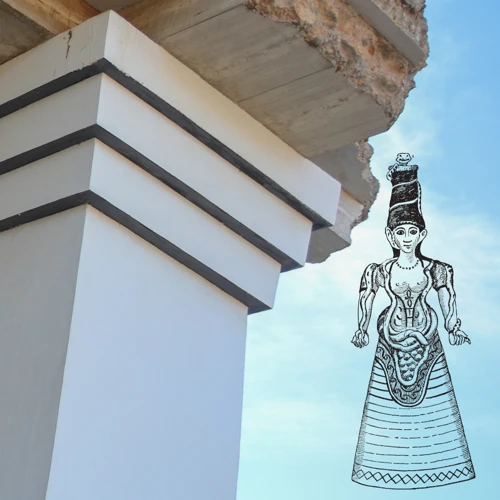
The mysterious decline of the Minoan civilization is a puzzle that has intrigued historians and archaeologists for centuries. There are several theories surrounding the downfall of this flourishing society. One prominent event believed to have played a significant role is the Theran eruption, a catastrophic volcanic eruption on the nearby island of Santorini. The eruption, estimated to have occurred around 1600 BCE, unleashed immense devastation, with ash and volcanic debris covering the region, including Crete. This natural disaster is thought to have caused widespread destruction, disrupted trade routes, and resulted in a decline in agricultural productivity. Additionally, the Minoans faced external threats from the emerging Mycenaean civilization, who eventually conquered and assimilated the Minoans into their own society. Internal conflicts and socio-political unrest within Minoan society may have further weakened their ability to withstand these external pressures. While the exact sequence of events and the relative importance of each factor is still a subject of debate, the decline of the Minoan civilization remains an enigmatic chapter in history, leaving us with more questions than answers.
1. Natural Disasters: The Theran Eruption
The Theran Eruption stands as a catastrophic event that played a significant role in the fall of the Minoan civilization. Around 1630 BCE, the volcanic island of Thera (modern-day Santorini) experienced one of the most powerful volcanic eruptions in recorded history. The eruption unleashed an immense amount of volcanic ash, gas, and pumice, which engulfed the region and impacted neighboring islands, including Crete. The fallout from the eruption caused widespread destruction, devastating Minoan settlements and infrastructure. The volcanic ash, with its high content of minerals, enriched the soil and initially led to increased agricultural productivity. However, the subsequent years brought long-term climatic changes, including a drop in temperature and a decline in rainfall, which severely impacted agricultural output. These environmental disruptions, coupled with the destruction of coastal areas by tsunamis triggered by the eruption, dealt a severe blow to the Minoan economy, which heavily relied on agriculture and trade. The Theran Eruption, with its immediate and long-term effects, weakened the Minoan civilization, leaving it vulnerable to external pressures and ultimately contributing to its decline.
2. Invasion and Conquest: The Mycenaeans
The Minoan civilization, once at the height of its power and influence, faced a formidable adversary in the form of the Mycenaeans. The Mycenaeans, a Indo-European people hailing from the mainland of Greece, launched an invasion and ultimately conquered the Minoan civilization. This event marked a significant turning point in Minoan history and contributed to its eventual decline. The Mycenaeans, known for their military prowess, toppled the Minoan palaces and established their own centers of power on the island of Crete. They absorbed elements of Minoan culture into their own, adopting Minoan writing systems, art styles, and religious practices. This fusion of Minoan and Mycenaean influences created a unique cultural blend that defined the later stages of the Bronze Age in the Aegean region. The Mycenaeans brought with them a hierarchical society and a more centralized governmental structure, exerting control over the island and exploiting its resources for their own gain. While the exact details of the invasion and its aftermath remain shrouded in mystery, the influence of the Mycenaeans on Minoan civilization can be seen as a catalyst for its ultimate downfall.
3. Internal Conflicts and Socio-Political Unrest
Internal conflicts and socio-political unrest played a significant role in the decline of the Minoan civilization. While the exact nature of these internal conflicts remains speculative, evidence suggests that they had a detrimental impact on Minoan society. Archaeological findings indicate the presence of fortifications within some Minoan palace complexes, hinting at the possibility of power struggles and social tensions. It is believed that rival factions within the ruling elite may have vied for control, leading to divisions and infighting that weakened the overall stability of the civilization. Additionally, socio-political unrest could have been fueled by social inequalities and disparities in wealth distribution. The Minoan society was not immune to the consequences of social imbalances, and the tensions arising from these divisions could have contributed to internal strife and a sense of unrest among the population. As the fabric of Minoan society started to fray, it became susceptible to external threats, eventually leading to its downfall.
Unraveling the Enigma

Unraveling the enigma surrounding the decline of the Minoan civilization has been a complex endeavor for researchers. Numerous theories and controversies have emerged, each offering a unique perspective on the factors that contributed to their downfall. One prevailing theory suggests that a catastrophic natural disaster, such as the powerful eruption of the Thera volcano (also known as the Santorini eruption), may have devastated the Minoans and disrupted their way of life. The eruption, which occurred around 1600 BCE, unleashed massive tsunamis and volcanic ash, causing widespread destruction throughout the region. Another theory proposes that the Mycenaeans, a civilization from mainland Greece, invaded and conquered the Minoans, gradually assimilating their culture and erasing their distinct identity. Internal conflicts and socio-political unrest within the Minoan society have also been cited as potential factors in their demise. Archaeological discoveries continue to shed light on these theories, offering tantalizing glimpses into the past and fueling ongoing research and analysis. As researchers diligently piece together the fragments of the Minoan civilization, the mysteries surrounding their ultimate fall remain both fascinating and perplexing, leaving us with a vivid reminder of the impermanence of even the most advanced civilizations.
1. Theories and Controversies
Theories and controversies surround the enigmatic decline of the Minoan civilization, providing fertile ground for speculation and debate among researchers. One prominent theory suggests that a cataclysmic event, such as a volcanic eruption, was responsible for the downfall of the Minoans. The eruption of the volcano on the nearby island of Thera (modern-day Santorini) is often cited as a possible cause, as its widespread devastation could have had a significant impact on Crete. Some scholars speculate that the volcanic ash and tsunamis triggered by the eruption dramatically disrupted Minoan society, leading to a decline in their economic and political stability. Another theory proposes that the invasion and subsequent conquest by the Mycenaeans, an ancient Greek civilization, played a vital role in the downfall of the Minoans. The Mycenaeans, with their militaristic culture and superior weaponry, may have overwhelmed and assimilated the weakened Minoan population. However, conflicting evidence and gaps in our understanding of the chronology of events make it challenging to ascertain the exact circumstances surrounding the collapse. Archaeological discoveries continue to shed light on this intriguing puzzle, bringing us closer to unraveling the secrets that lie beneath the surface. (Link to “comet-impact-earth”)
2. Archaeological Discoveries
Archaeological discoveries have played a vital role in unraveling the mysteries surrounding the Minoan civilization. Over the years, numerous excavations and research efforts have shed light on the rich and complex history of this ancient civilization. One of the most significant archaeological finds was the discovery of the palace complex at Knossos by British archaeologist Sir Arthur Evans in the early 20th century. The extensive excavation of this site revealed a labyrinthine structure with intricate frescoes, storage rooms, and an advanced drainage system. The artifacts and paintings found within the palace provided valuable insights into Minoan daily life, religious rituals, and artistic achievements. Another remarkable discovery was the unearthing of the Phaistos Disc, a clay disk inscribed with an undeciphered writing system that remains a tantalizing mystery. Other excavations across Crete have revealed stunning figurines, jewelry, and pottery, all demonstrating the artistic and cultural sophistication of the Minoans. These archaeological findings continue to intrigue researchers, pushing the boundaries of our understanding of this extraordinary civilization. While questions remain, each discovery brings us closer to piecing together the fascinating puzzle of the Minoan world.
Conclusion
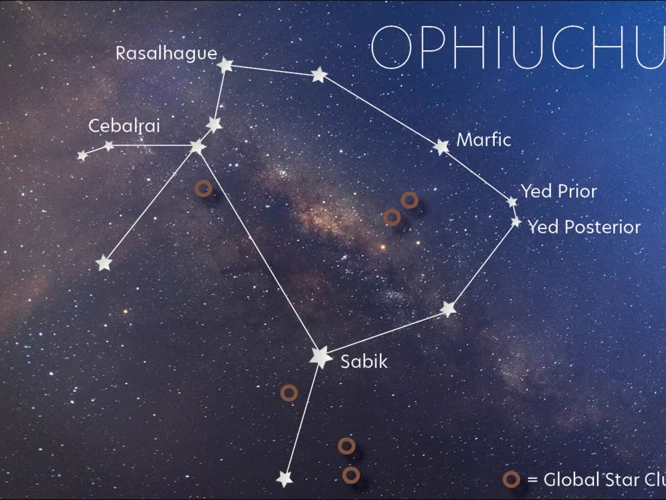
In conclusion, the rise and fall of the Minoan civilization continues to captivate researchers and ignite a sense of curiosity about this ancient society. The achievements of the Minoans in architecture, art, and maritime trade set them apart as innovators and pioneers of their time. Their remarkable cultural exchange with Egypt and Mesopotamia, as well as their unique religious practices centered around bull worship and sacred caves, demonstrate the rich tapestry of their beliefs and traditions. However, the enigmatic decline of the Minoan civilization leaves us with more questions than answers. Theories surrounding natural disasters like the Theran eruption, invasion and conquest by the Mycenaeans, and internal conflicts and political unrest offer potential explanations, but the true cause remains elusive. Ongoing archaeological discoveries shed light on this ancient civilization, but the puzzle of their rise and fall may never be fully unraveled. As we continue to explore the remnants of the Minoan civilization, we are reminded of the fragility and impermanence of human societies, a lesson as relevant today as it was thousands of years ago.
Frequently Asked Questions

1. How did the Minoan civilization acquire its wealth?
The Minoans amassed their wealth through maritime trade networks. Their skilled seafaring abilities allowed them to establish trade routes to various regions, including Egypt, Mesopotamia, and the Greek mainland. They traded goods such as olive oil, wine, pottery, textiles, and precious metals, which brought prosperity to their civilization.
2. What were the key architectural features of Minoan palaces?
Minoan palaces, like Knossos, Phaistos, and Malia, were characterized by their multi-storied structures, intricate frescoes, and advanced plumbing systems. The palaces featured central courtyards, grand staircases, and storage rooms that showcased the advanced engineering and architectural skills of the Minoans.
3. Were the Minoans influenced by other civilizations?
Yes, the Minoans were influenced by neighboring civilizations such as Egypt and Mesopotamia. This influence can be seen in their art, architecture, and religious practices. The Minoans adapted and incorporated elements from these cultures while maintaining their unique identity.
4. What was the significance of bull worship in Minoan religion?
Bull worship held immense significance in Minoan religion. Bulls were considered sacred creatures and were associated with fertility, power, and the divine. Rituals involving bull-leaping and bull-sacrifice were performed to honor and communicate with the gods.
5. Did the Minoans have religious sites other than palaces?
Yes, the Minoans had sacred caves and mountaintop sanctuaries where religious ceremonies and rituals took place. These natural sites were believed to be portals to the spiritual world, and their exploration and worship played a vital role in Minoan religious practices.
6. What led to the decline of the Minoan civilization?
A combination of natural disasters, invasion, and internal conflicts led to the decline of the Minoan civilization. The volcanic eruption on the island of Thera (Santorini) caused widespread devastation, weakening the Minoans. Additionally, the Mycenaeans, a formidable Bronze Age civilization, invaded and eventually conquered Crete. Socio-political unrest within Minoan society contributed to its downfall.
7. What are some theories surrounding the collapse of the Minoan civilization?
Several theories have been proposed regarding the collapse of the Minoan civilization. Some suggest that the volcanic eruption on Thera triggered a tsunami that devastated the coastal areas of Crete. Others argue that the invading Mycenaeans gradually assimilated and displaced the Minoans. Internal conflicts and social unrest have also been proposed as contributing factors.
8. How has archaeology contributed to our understanding of the Minoan civilization?
Archaeological discoveries, such as the excavation of Minoan palaces, tombs, and settlements, have provided valuable insights into the Minoan civilization. These findings have revealed details about their daily life, art, religious practices, and interactions with other cultures. The decipherment of Linear A and Linear B scripts has also shed light on their language and administration.
9. What impact did the Minoan civilization have on later civilizations?
The Minoan civilization had a profound impact on later civilizations in the Mediterranean world. Their art, architecture, and seafaring skills influenced subsequent cultures, including the Mycenaeans and the Greeks. The Minoans also played a significant role in shaping the trade networks and cultural exchanges of the ancient world.
10. Why is the story of the Minoan civilization considered an enigma?
The story of the Minoan civilization is considered an enigma because many aspects of their culture and demise remain shrouded in mystery. The lack of written records in a deciphered script, the sudden collapse of their civilization, and the limited historical documentation all contribute to the ongoing intrigue and speculation surrounding the Minoans.
References
Frequently Asked Questions

1. What is the significance of the Minoan Civilization?
The Minoan Civilization was a highly advanced society that thrived on the island of Crete during the Bronze Age. Known for their impressive architecture, intricate artwork, and maritime prowess, the Minoans held great influence in the Mediterranean region.
2. How did the Minoans achieve their advanced architecture and engineering?
The Minoans were skilled architects and engineers, utilizing advanced techniques such as multi-story buildings, complex drainage systems, and sturdy earthquake-resistant structures. Their ingenuity allowed them to create impressive palaces and cities that still captivate us today.
3. What role did art and pottery play in Minoan civilization?
Art and pottery held immense significance in Minoan culture. The Minoans were renowned for their exquisite frescoes, vibrant wall paintings, and intricately designed ceramics. These artistic expressions offer valuable insights into their daily life, beliefs, and rituals.
4. How did the Minoans dominate maritime trade in the region?
With their superior seafaring abilities and advanced shipbuilding techniques, the Minoans became dominant maritime traders. They established vast trade networks, connecting Crete to Egypt, Mesopotamia, and other Mediterranean civilizations, allowing them to accumulate wealth and influence.
5. How did the Minoans interact with Egypt and Mesopotamia?
The Minoans had significant cultural exchange with Egypt and Mesopotamia. They imported goods, ideas, and artistic influences from these civilizations. Egyptian influence can be seen in Minoan artwork, while Mesopotamian influence is apparent in their administrative systems.
6. What was the significance of bull worship in Minoan religion?
Bull worship played a prominent role in Minoan religion. Bulls were revered as symbols of power, fertility, and regeneration. Bull-leaping rituals and the depiction of bull imagery in art and architecture suggest that they held great spiritual significance in Minoan culture.
7. What were the sacred caves and mountaintop sanctuaries used for?
Sacred caves and mountaintop sanctuaries were central to Minoan religious practices. These locations were believed to be entrances to the spiritual realm, and they were used for rituals, ceremonies, and possibly even as oracle sites, where the Minoans sought divine guidance.
8. What led to the decline of the Minoan Civilization?
The Minoan Civilization faced multiple challenges, including natural disasters, invasion and conquest, and internal conflicts. The eruption of the Thera volcano, invasion by the Mycenaeans, and socio-political unrest within their society all contributed to the ultimate downfall of the Minoans.
9. What are some theories and controversies surrounding the decline of the Minoan Civilization?
Various theories exist regarding the decline of the Minoans. Some suggest that the Theran eruption caused widespread destruction and disruption, while others propose that the invasion by the Mycenaeans was the main catalyst. Controversies also surround the possibility of a tsunami triggered by the eruption.
10. What recent archaeological discoveries have shed light on the Minoan Civilization?
Recent archaeological discoveries have provided valuable insights into the Minoan Civilization. Excavations at sites such as Knossos have uncovered artifacts, palaces, and ancient frescoes that offer a deeper understanding of their daily life, society, and artistic achievements.







